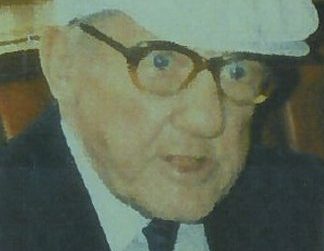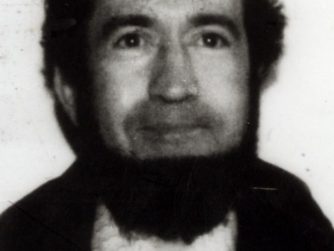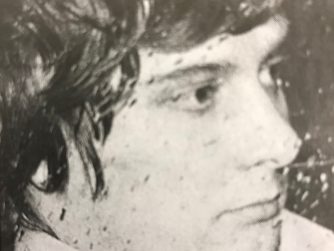The first 72 hours of any murder investigation are always the most critical, as is within this time period that the minds and accounts of any witnesses are the freshest. A killer has more chance of being captured the closer it is to the time the crime occurred, the chances of obtaining decent quality forensic evidence may degrade or may even be destroyed if left any longer than this, and there is generally a better chance of successful detection of a crime if every angle that can possibly be covered by an investigating team is covered and this time period utilised to its full. Of course, not every crime is discovered mere minutes or hours after it has been committed. When a crime isn’t even discovered until past the “golden 72” hours – it’s cold before an investigation can even begin, and can lead to a puzzling case that can confound detectives and remain unsolved for many years to come. One such case is a murder that has puzzled detectives in Nottingham for more than forty years.
The Nottingham district of Wollaton Park during the later years of the Second World War was much like many parts of the United Kingdom at that time – there was a surplus of American soldiers there ready to romance the local girls. Joan Smith was one such girl, a 16 year old local girl who was swept off her feet in the summer of 1944 by a handsome G.I from 508 Airborne called Clarence Maschek. Romance blossomed before Clarence set off for the Normandy landings, and Joan played the faithful sweetheart waiting back at home for her G.I to return. Clarence was injured during the invasion, and returned to Nottingham as the proud recipient of a Purple Heart medal, ready to claim Joan as his bride. In the summer of 1945, the couple were married at Shakespeare Street Registry Office in Nottingham and decided to return to Clarence’s home country for their new life, settling in South Dakota where they lived happily for a number of years.
However, after some years the marriage broke down, and Joan returned to Britain alone and settled back in Nottingham. By the summer of 1976, she was 48 years old and living alone in a bedsit in Douglas Road in the Lenton district of Nottingham. The area at the time had a high number of bedsits, with a high turnover of tenants, and Joan became well known throughout the local area. She was described as being “an artistic type” and dressing flamboyantly, wearing cloaks and large floppy hats to visit the pubs and clubs of the area. This made “Artistic Joan” a familiar sight, but when Joan hadn’t been seen for several days over the hot summer of 1976, friends were concerned. She hadn’t been seen since the afternoon of 10th July, a Saturday, and by Tuesday 13th July 1976, the same friends went around to Joan’s flat to check on her wellbeing. Perhaps Joan was ill or had had an accident? What they found horrified them, and led to the start of a baffling mystery that has remained unsolved for more than 40 years.
At 8:45pm on Tuesday 13th July 1976, Joan’s body was found in her blood-soaked flat. She had been brutally battered to death and had clearly been dead for some time before she had been discovered. Police were called, and a murder investigation was launched, led by Detective Chief Superintendent Roy Readwin of Nottinghamshire CID. From the start, it was apparent that Joan had been battered to death with a heavy blunt instrument, which was possibly her own guitar as traces of her blood and damage to it were found. She was thought to have been killed between sometime late in the evening of the Saturday, and early on the Sunday morning before she was found. The subsequent post mortem revealed that Joan had indeed died as the result of head wounds caused by a severe beating with a blunt edged object. There was no reported evidence of Joan having been the victim of a sexual assault.
Although subsequent house to house enquiries brought about the general consensus that Joan was a lady who generally kept to herself and wasn’t a troublemaker, there were tales of several “mystery callers” to her ground floor flat. There were tales of Joan often wandering around, coming and going in the dark, and according to neighbours, Joan enjoyed a busy social life.
“A lot of people would come and go at all hours of the day and night. There always seemed to be parties or goings-on in the flat.” – neighbours of Joan
Was the killer one of these mystery callers? Detectives struggled to find a definite motive for her murder. Joan was not found to have any obvious enemies and was not known to be in any sort of romantic relationship. Nor was she known to be involved in anything illicit and untoward. With the reports of a sizeable volume of frequent callers to Joan’s flat, detectives had a massive pool of potential suspects to trawl through. Though the majority of them were traced and eliminated from enquiries, a few weeks after Joan’s murder detectives eventually found themselves left with two persons of interest that they have never been able to trace.
The first was a man who had been seen by several people in the company of Joan, and police had a detailed enough description of him to issue an artist’s impression to the press. He was described as being in his 20’s, tall and slim, long haired and with a wispy moustache and reddened cheeks. He was described as being “scruffy” but good mannered and polite, and knowledgeable about classical music and ballet – which he would often chat to Joan about. The artists impression is depicted below:


Who was this man? Despite the widespread publicity and appeal, he never came forward and was never identified.
The second person that police wished to trace was another man who had been seen walking with Joan early one morning, a few days before she was murdered. A young officer who bore a striking resemblance to the man took part in a reconstruction of Joan’s last known movements, but this man never came forward and was never found either.

Six weeks into the murder hunt, Chief Supt Readwin and his team thought that they had the breakthrough they were looking for when a man walked into Canning Circus police station and confessed to the murder. He walked in and calmly announced:
“Lock me up – I’ve killed Joan”
However, any elation that the conscience of Joan’s killer had got the better of them soon evaporated. After a number of hours of intensive questioning by Readwin and his team, the man – who has never publicly been named – was found to be one of the number of attention seeking people who confess to crimes they haven’t committed. He was found to be nothing but a hoaxer, trying to deliberately get himself jailed and instead found himself charged with wasting police time. The investigating team were back to square one, but Readwin found time to shatter the misconception of a quick arrest always being the primary aim of a murder investigation when subsequently interviewed by the press.
“Our over-riding duty is to protect life and establish the truth… not just get a confession. Murders aren’t usually solved by stunning strokes of detection. It’s organisation, a professional system, that counts, especially in difficult jobs like this one.” – Detective Chief Superintendent Roy Readwin (speaking in 1976)
Following this, the murder investigation stalled, and began to wind down. The file on Joan’s murder eventually contained thousands of witness statements and the results of enquiries – all of which were fruitless. More than 100 detectives had exhausted every potential lead that they had, even making enquiries abroad stretching from New York to New Zealand. Nothing to progress the enquiry further was found. As many of the callers to Joan’s flat as could possibly be traced were traced – and eliminated. The reconstruction and artists impressions had produced nothing, and although it was reported that police had evidence from the scene, it has never been revealed publicly what this evidence exactly is, except that it is only known to the police and the killer. The three day head start that Joan’s killer had on detectives weighed heavily on the enquiry, as more than one officer believed that in these three days, the killer may have started a new life thousands of miles away from Nottingham. Police may have been looking for a killer that was already thousands of miles away. Although the murder file has never been officially closed, the case has been cold for many years now.
This is a case that relatively little information about is readily available for research, with very little available to learn about Joan – for example it is not known the extent of her remaining family, whether she was employed or not – I was unable even to obtain a picture of Joan. What is available is scant, and leaves frustrating gaps that if were filled may help paint a picture of the psychology of Joan’s killer. Because what is known raises more questions and possibilities than it provides definitive answers, as it stands much of any profile can only be surmised or speculated.
What would the likely motive be in this case? Revenge seems unlikely – an intensive police investigation revealed no known enemies of Joan, or anyone with a reason to wish her dead. Was it then a robbery gone wrong, or a sex crime? Unfortunately, there is scant detail here to be able to rule either out, but both are possibilities. It is not known if anything had been taken from Joan’s bedsit, or there were any signs of ransacking at the scene, but there is no mention of any sexual assault either. Again, this is hypothesis only, but a robber comes to rob and a rapist comes to rape. I believe that there would have been mention of signs of either given to the press as important appeal points, so both of these would seem unlikely.
It seems more likely that Joan was killed as a result of an argument and that this was not a pre meditated killing – perhaps she had refused sex or money to someone, and a subsequent argument led to murder? If the murder weapon was Joan’s guitar – as police thought likely – then this supports the spur of the moment killing theory even more, because using as an unlikely murder weapon as a guitar would mean that Joan was battered to death with the first thing to hand. It is more likely that with a pre-meditated murder, the killer would have brought a weapon to the scene with them, possibly a method of restraint also. There is no report of Joan having been restrained at all.
As there was no reported signs of forced entry to her flat, the theory police worked on was that Joan knew and had invited her killer in. This is likely, but not definite. The summer of 1976 was a record breaking heatwave, so it is possible that someone gained access through a window that Joan may have left open to let air into her flat. It was a ground floor flat so would have been easily accessible. This would more support the burglar/sex killer theory, but as already stated the lack of information available makes this impossible to ascertain. No sounds of a struggle or screams were reported heard so pinpointing an exact time of death is difficult, and so many people were reported as coming and going from Joan’s flat over time that anyone seen in the vicinity around the time she was estimated to have died may have been forgotten and overlooked by any witnesses.
It is impossible to paint a physical description of Joan’s killer, and any physical description would now be rendered useless anyway, as nearly 41 years have passed and features would have changed, people would have aged. There is also the possibility that her killer may now himself be dead. It should not be taken as definite that either the man in the reconstruction or the man in the artists impression was Joan’s killer – these were simply important persons of interest that were never traced. One or both of the persons appealed for may by now also even be dead.
Even the character of Joan’s killer can only be surmised at. This could be a violent psychopath, or it could be someone normally mild mannered who killed in a moment of madness? It is possible that this is a person who has a history of violent offending – battering someone to death would suggest a person with a history of violence, perhaps even someone who has killed before. If this was the case, a possibly linked case in my opinion that should be considered is one covered by The True Crime Enthusiast some weeks ago, the murder of nurse Susan Donaghue in Bristol in August 1976. The post concerning Susan’s murder can be found here, and it is up to the reader to speculate on any link.
But of course, the possibility remains that her murder could have been the result of a moment of madness by someone normally mild mannered and law abiding. How many times has this been seen in the court system, people seeing red and killing someone in the heat of the moment? If this was the case, I believe that remorse would have got the better of the person and he would have come forward – or possibly even committed suicide shortly after because of the enormity of what he had done.
It is stated that police have evidence known only to themselves and Joan’s killer – but it is not known exactly what form this evidence takes. Fingerprints? Blood or semen? If it is hair or fluid of some kind, then it may be possible to extract some form of DNA fingerprint with the technology available today. It is unreported if this has been done or not – but even if it has, the status of Joan’s murder as unsolved would mean that any potential DNA match is not on the National DNA database. Perhaps this dead end sums up the entire enquiry into Joan Maschek’s murder – a case that seems to lead to dead ends at every turn. However, Nottinghamshire Police periodically review the case, and remain optimistic that Joan’s killer may one day face justice.
“Nottinghamshire Police never gives up on unsolved murders and will regularly revisit and review these cases to see how new evidence and information could help to bring the perpetrators to justice. We believe Joan’s killer may still be out there and would encourage anyone with information about her murder to come forward.” – Detective Inspector Hayley Williams, Nottinghamshire Police
Anyone with information on Joan’s murder should call Nottinghamshire Police on 101.
The True Crime Enthusiast



